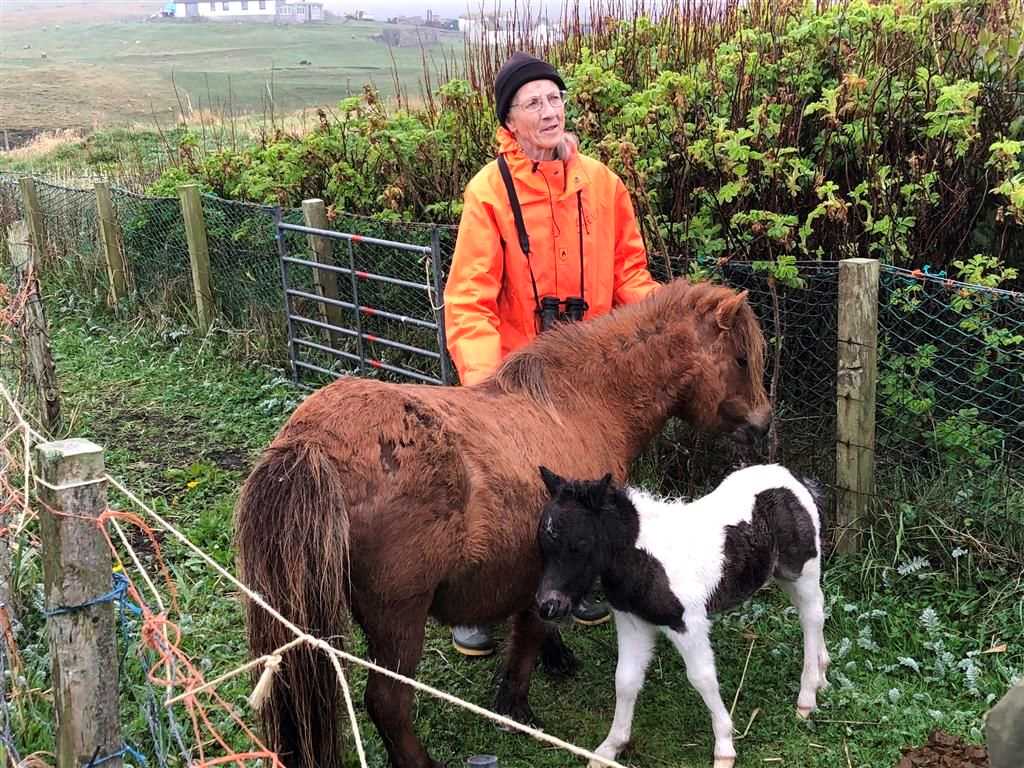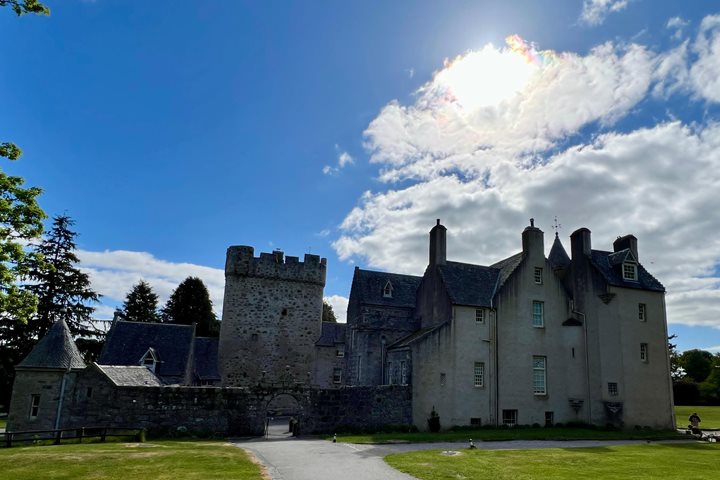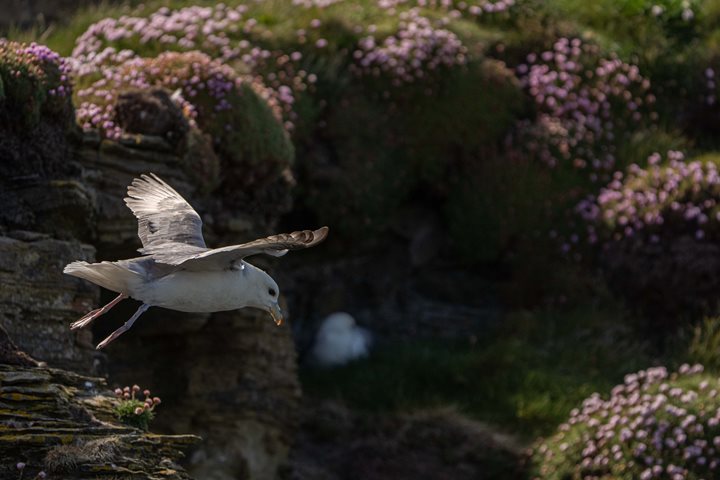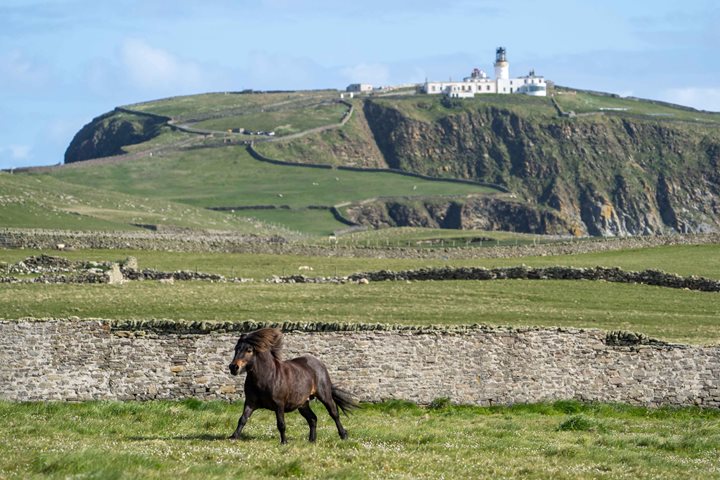Overnight we sailed from Kirkwall in Orkney to Foula Island in the Shetlands. Foula was shrouded in light rain and mist as we arrived. We were greeted by long-time resident and guide Sheila Gear who shared her knowledge of the local culture, flora, and fauna. The 4.5-square-mile island is home to 35 hardy residents, primarily crofters who raise sheep and ponies. This was Lindblad Expeditions’ first visit to the remote island of Foula, which has been continuously inhabited since Neolithic times.
Guests split into three groups. Some walked the coastal path to cliffs beyond the World War II Memorial, while others lingered closer to the harbor. After walking, we were invited to Foula Primary School where tea, coffee, and cakes were served. The five primary school students and their teacher sold souvenirs and crafts to raise money for future field trips off the island. Wildlife highlights included puffins, fulmars, seals, and skuas.
During lunch, the ship sailed on to Mousa. Guests enjoyed Zodiac tours of the coast, during which we viewed a variety of seabirds, including black guillemots, shags, fulmars, and arctic terns. The archaeological highlight was exploring Scotland’s best-preserved example of a broch. Historians David Barnes and Vinnie Butler provided background information about the builders of the approximately 2,000-year-old structure and its possible purpose and use. We were able to climb a narrow stairway through the double-skinned drystone walls for an impressive view. As the fog thickened, our skilled staff navigated the Zodiacs back to our ship.






